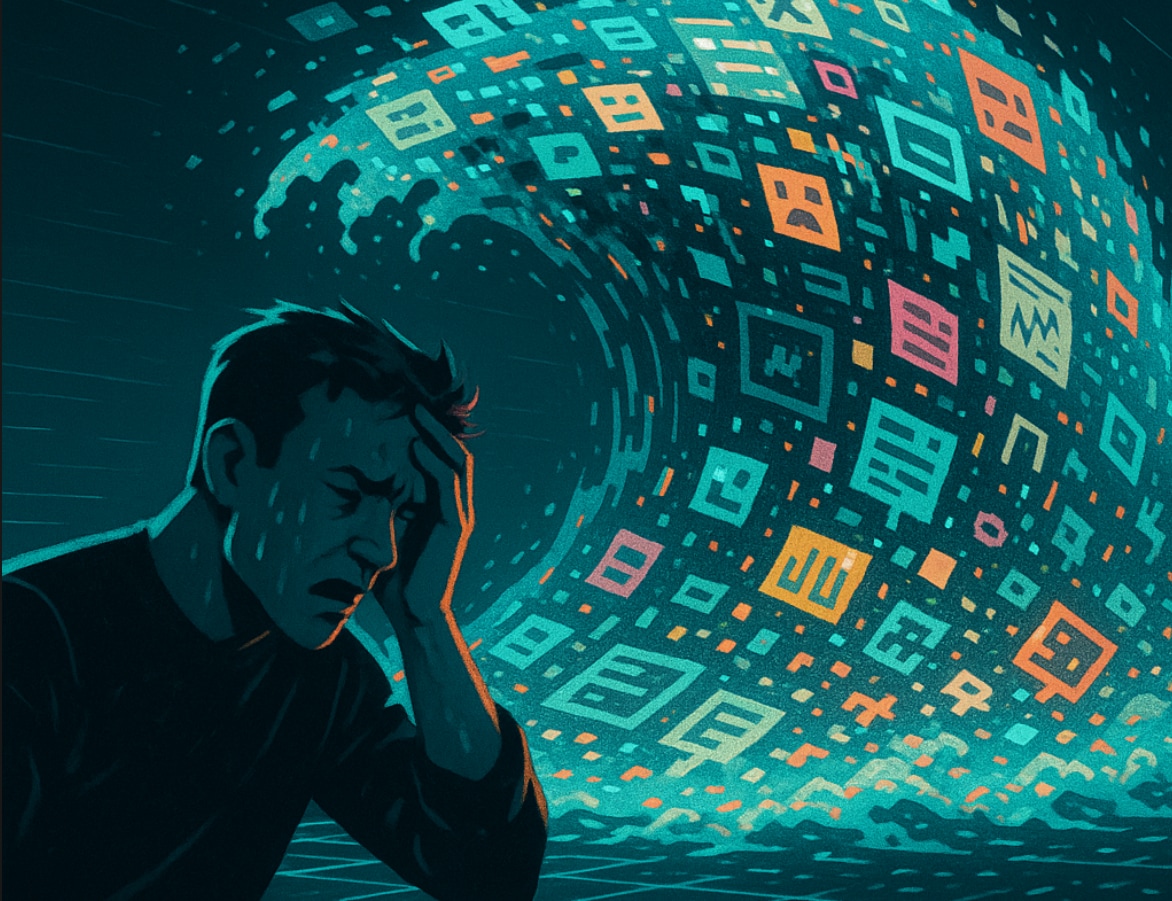You've seen it. That weird article with nonsensical phrases, the YouTube video with a robot voice, or the social media image where people have seven fingers. You're witnessing the rise of AI slop, a term for the tidal wave of low-effort digital content flooding the internet. This digital clutter represents a core conflict for modern creators: AI's incredible potential to enhance creativity versus its ability to mass-produce mediocrity.

This guide is your playbook. We will define AI slop, uncover its dangers, and give you a clear strategy to rise above it. You'll learn to use powerful AI tools not as a replacement for creativity, but as a partner in producing high-quality, "anti-slop" content that captivates audiences and builds your brand.
In this article
Part 1. The Rise of the Slop: Unpacking the Buzzword Everyone's Talking About
The term AI slop has exploded into the mainstream, but what does it actually mean? It's more than just a catchy phrase; it describes a fundamental shift in the digital landscape. To navigate this new reality, creators must first understand what they're up against, why it exists, and how to recognize it in the wild.
Defining AI Slop: It's Not Just "Bad AI"
At its core, AI slop is high-volume, low-effort, and often inaccurate or soulless digital content generated by AI, prioritizing quantity over quality. The key isn't the use of AI itself, but the lack of human care, intent, and refinement.
High-effort, creatively guided work that uses AI as a tool is not slop. The term specifically refers to content churned out with minimal human oversight. It's the difference between an artist using a new kind of brush and a machine endlessly printing the same generic painting.
Why Is It Everywhere? The Economics of Digital Clutter
The explosion of AI slop is fueled by simple economics. Generative AI makes it incredibly cheap and fast to produce vast amounts of content. This incentivizes bad actors to engage in "content farming"—creating countless low-quality articles, videos, and social posts to game algorithms for ad revenue and clicks.
This race to the bottom contributes to the "enshittification" of online spaces. When algorithms can't distinguish between thoughtful content and automated garbage, our feeds and search results become clogged with digital clutter, making it harder for genuine creators to be seen and heard.
Can You Show Me Some Examples? (The "Shrimp Jesus" Effect)
The concept of AI slop becomes crystal clear with a few infamous examples. Perhaps the most famous is the "Shrimp Jesus" phenomenon, where AI image generators produced bizarre and nonsensical images that went viral. But the examples are everywhere.

You'll find AI slop in:
- YouTube channels with robotic narration over generic stock footage.
- nonsensical articles filled with repetitive phrases and factual errors.
- Fake, often disturbing, political imagery designed to spread misinformation.
- Social media profiles posting generic, soulless comments to appear active.
The difference between low-effort AI slop and high-quality AI-assisted art is profound. One is careless automation; the other is intentional creation.
Part 2. The Real Danger of AI Slop for Creators and Audiences
While some AI slop might seem harmless or even amusing, its widespread proliferation poses a significant threat to the entire digital ecosystem. For content creators, the stakes are particularly high, impacting everything from audience trust to financial viability. Understanding these dangers is the first step toward building a defense against them.
Eroding Trust and Spreading Misinformation
The flood of low-quality AI slop, including convincing deepfakes and fake news articles, pollutes the information landscape. It becomes harder for audiences to distinguish fact from fiction, leading to a general erosion of trust in online sources. This damages the credibility of all digital creators, as audiences become more skeptical of the content they consume.
Drowning Out Human Creativity and Financial Impact
For many creators, the biggest fear is being replaced or simply drowned out. Algorithmic feeds on platforms like YouTube and Instagram, often unable to differentiate quality from quantity, can become saturated with AI slop. This reduces the visibility of human-made or human-led content, directly impacting views, engagement, and ultimately, a creator's ability to earn a living.
The SEO Penalty: How Slop Can Tank Your Rankings
Search engines like Google are in a constant battle against low-quality content. Their algorithms are designed to reward content that demonstrates E-E-A-T: Experience, Expertise, Authoritativeness, and Trustworthiness. AI slop inherently fails on all these fronts. It lacks genuine experience and expertise, is not authoritative, and erodes trust.
Producing this type of content can lead to severe SEO penalties, causing your rankings to plummet. Google's helpful content updates specifically target and demote sites that prioritize quantity over providing real value to users.
For a deeper dive into how this phenomenon is reshaping our online world, this video provides an excellent overview:
Part 3. The "Anti-Slop" Mindset: How to Rise Above the Noise
The solution to the problem of AI slop isn't to reject AI entirely. It's to adopt an "anti-slop" mindset. This means embracing AI as a powerful tool for efficiency and inspiration while doubling down on the one thing it can't replicate: your unique human creativity, perspective, and commitment to quality. This mindset is your greatest competitive advantage.
Spotting the Slop: A Quick Detection Checklist
Before you can create "anti-slop" content, you need to be able to spot its opposite. Use this checklist to identify the common red flags of AI slop.
| Red Flag | What to Look For |
| Soulless Language | Repetitive phrases ("in today's digital age," "unlock the power of"), generic advice, lack of a distinct voice or personality. |
| Visual Artifacts | In AI images: extra fingers, distorted faces, nonsensical text, objects merging unnaturally. In video: weird glitches or poor cuts. |
| Lack of Sources | Articles or videos making claims without citing sources, providing evidence, or linking to authoritative pages. |
| No Clear Author | Content published under a generic brand or anonymous profile with no verifiable author bio, expertise, or history. |
| Factual Inaccuracies | Information that is outdated, contradictory, or demonstrably false. AI models can "hallucinate" and present incorrect data as fact. |
| Poor Engagement | Low-quality comments that are often generic or spammed by bots, indicating a lack of a real community. |
The Critical Distinction: AI-Generated vs. AI-Assisted
The core of the "anti-slop" mindset lies in understanding this crucial difference. One path leads to mediocrity, the other to innovation.
AI Slop Workflow (AI-Generated):
Idea → AI Full Generation → Publish (Minimal Human Input)
Quality Creator Workflow (AI-Assisted):
Idea → AI Draft/Asset Creation → Human Refinement & Storytelling → AI Polish/Enhancement → Final Human Review → Publish
The quality workflow puts the creator in the driver's seat. AI handles the grunt work, but the vision, creativity, and final approval remain distinctly human.
Methods to Avoid AI Slop:
- Add a clearprompt — Say what you think, not what AI thinks.
- Use real references or facts — Ground your content in something real, not pure AI speculation.
- Write in a narrative flow — Structure your content like a story, not a random info dump.
- Show evidence or examples — Back up your claims so it doesn’t feel empty or generic.
- Edit with intention — When making video content, use tools like Filmora to add pacing, captions, and B-roll to make it feel crafted, not auto-generated.
Part 4. A Creator's Playbook: Using Filmora as a Partner, Not a Replacement
Adopting the "anti-slop" mindset is about making smart choices with your tools. Instead of using AI to replace your creative process, use it to enhance it. Filmora is designed with this philosophy at its core, offering a suite of AI tools that act as a creative partner. Here's a practical, step-by-step playbook for creating high-quality videos that stand out from the AI slop.
Step 1Edit Smarter, Not Lazier, with AI Copilot
Generic AI slop videos are often created with a single prompt like "make a video about dogs." A quality creator uses AI with more precision. Filmora's AI Copilot Editing functions as your intelligent assistant, not your replacement.
Instead of lazy prompts, give it specific, creative tasks:
- "Suggest a fast-paced montage sequence for these clips."
- "Apply a consistent vintage color grade to my B-roll footage."
- "Find the best moments in this long clip where the speaker is smiling."
This approach uses AI to accelerate your workflow, freeing you up to focus on storytelling and creative decisions.
Step 2Generate Unique Soundtracks with the AI Music Generator
One of the biggest giveaways of AI slop is robotic narration paired with generic, overused stock music. Your video's soundscape is crucial for conveying emotion. Instead of spending hours searching for a mediocre track, you can create a perfect one.
With Filmora's AI Music Generator, you can define the mood (e.g., uplifting, melancholic, epic), genre, and exact duration. The AI creates a custom, royalty-free soundtrack that perfectly matches your video's emotional arc. This is a level of detail and care that slop producers ignore.
Step 3Create Thumbnails That Tell a Story
AI slop often uses generic, clickbait thumbnails that mislead the viewer. Your thumbnail is your video's first impression—it should be an authentic preview of the value inside.
Use Filmora's AI Thumbnail Creator as a powerful starting point, not a one-click final product.
- Let the AI suggest compelling layouts from its template library.
- Choose a key emotional frame from your video that sparks curiosity.
- Add your unique brand elements, colors, and fonts.
- Write compelling, human-centric text that poses a question or promises a solution.
The tool saves you time on layout and design, not on the critical thought that makes a thumbnail effective.
Step 4Perfect the Final Polish with AI Enhancements
The final 10% of effort is what separates exceptional content from AI slop. This is where you show your audience that you care about their viewing experience. Use Filmora's AI-powered finishing tools to add a layer of professionalism.
- Use AI Denoise to ensure your audio is crisp and clear.
- Apply Video Stabilization to smooth out shaky handheld footage.
- Leverage the AI Color Palette to ensure a beautiful, cohesive look across all your clips.
These finishing touches are signs of a dedicated creator. By using these tools, you are delivering a polished, high-quality product that respects your audience's time and attention. To learn more about these techniques, check out Filmora's resources on creating high-quality video content.
Conclusion: Your Role in Building a Better, AI-Enhanced Internet
The rise of AI has brought us to a crossroads. One path leads to an internet flooded with disposable, low-value AI slop. The other leads to a new golden age of creativity, where human ingenuity is amplified by intelligent tools. The choice of which path we follow lies with creators like you.
AI is a powerful instrument, but its output—whether it's priceless art or worthless junk—is a direct reflection of the creator's intent, effort, and commitment to quality. By embracing an "anti-slop" mindset and using tools like Filmora thoughtfully, you are doing more than just making better videos. You are casting a vote for a more creative, valuable, and human-centric internet.



 100% Security Verified | No Subscription Required | No Malware
100% Security Verified | No Subscription Required | No Malware


